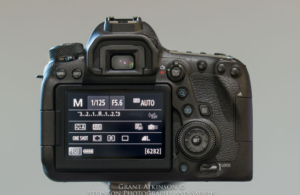Understanding Lens Mounts and Compatibility
In the intricate world of photography, understanding lens mounts and compatibility is paramount to achieving optimal results. This comprehensive guide aims to delve deeper into the complexities of lens mounts, compatibility issues, and effective navigation strategies.
What are Lens Mounts?
Exploring the Basics
Lens mounts act as the vital interface between the camera body and the lens. They come in various types and designs, each tailored to specific camera manufacturers and models.
Types of Lens Mounts
Common Lens Mounts
- Canon EF Mount: Widely used in Canon DSLRs, renowned for its compatibility across various Canon camera models.
- Nikon F Mount: The standard mount for Nikon DSLRs, offering a wide range of lens options and compatibility with legacy lenses.
- Sony E Mount: Found in Sony mirrorless cameras, known for its compact design and compatibility with a diverse range of lenses.
- Micro Four Thirds Mount: Utilized by Panasonic and Olympus mirrorless cameras, characterized by its smaller size and broad lens compatibility.
Understanding Compatibility
Factors to Consider
Achieving compatibility between camera bodies and lenses involves considering several key factors:
- Camera Brand and Lens Mount: Different camera brands utilize distinct lens mounts, necessitating compatible lenses.
- Full-frame vs. Crop Sensor Cameras: Compatibility may vary between full-frame and crop sensor cameras due to differences in sensor size.
- Electronic Communication: Ensuring electronic communication between the camera and lens is vital for autofocus and aperture control.
- Autofocus Compatibility: Some lenses may not fully support autofocus on certain camera bodies, requiring manual focus.
Navigating Compatibility Issues
Challenges and Solutions
- Using Lens Adapters: Adapters allow for mounting lenses with incompatible mounts onto camera bodies, albeit with potential limitations in functionality.
- Third-Party Lenses: Third-party lens manufacturers offer alternatives to proprietary lenses, often at more affordable prices, but compatibility may vary.
- Firmware Updates: Regular firmware updates from camera manufacturers can address compatibility issues and enhance lens performance.
Importance of Compatibility
Seamless Integration
Achieving compatibility ensures seamless integration between camera bodies and lenses, optimizing performance and functionality. This integration facilitates smooth communication, resulting in sharper images and enhanced shooting experiences.
Understanding lens mounts and compatibility is fundamental for photographers seeking to maximize their equipment’s potential. By comprehending the nuances of different lens mounts and compatibility factors, photographers can make informed decisions when selecting lenses and avoid compatibility issues in their workflows.
To understand how a DSLR camera adjusts its lens to focus on different distances, it’s essential to grasp the concept of lens mounts and compatibility ,check our article How Does a DSLR Camera Adjust Its Lens to Focus on Different Distances?
RELATED POSTS

Understanding Different File Types and Their Impact on Memory Card Storage

How Can You Fix Focus Issues in a Camera Lens That Consistently Produces Soft or Blurry Images?

How Photographers Can Optimize Their Use of Multifunctional Control Dials for Faster Adjustments ?


One thought on “Understanding Lens Mounts and Compatibility”